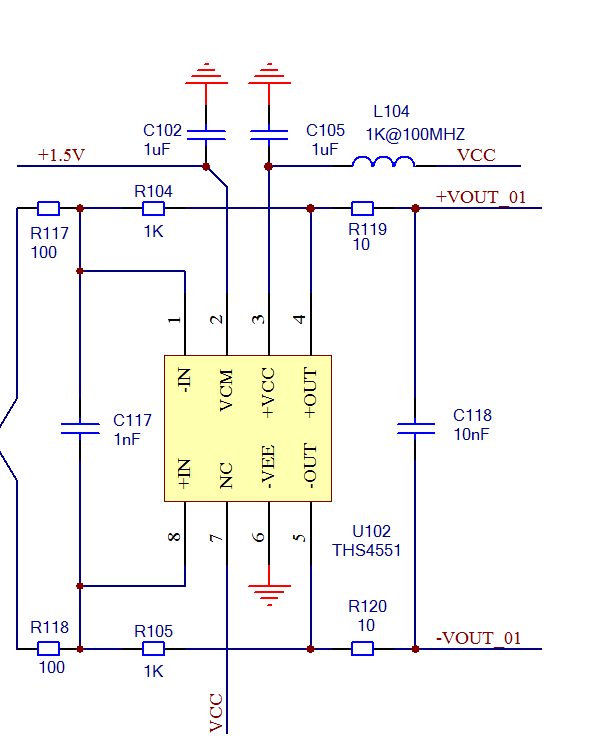Other Parts Discussed in Thread: THS4521
Unexpected THS4551 large current consumption
We try to use the ths4551 as a Diff buffer as the following schematic. There are four ths4551 in the design and the Vcom are connected together and set to a 1.5V ref. (The power supply VCC = 5.0 V )
The strange is that the quiescent current Iq of every ths4551 was as large 100mA, when ths4551s were soldered into the PCB.
With the same PCB, I tried the ths4521, which has similar pinout and function, the Iq is as small as 1.3mA just as datasheet saying.
Is there anything I missed? Any comments or help will be appreciated.


